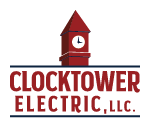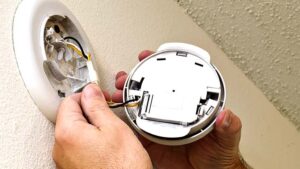As a business owner, managing overhead costs is a huge piece of maintaining profitability. One often overlooked area where significant savings can be made is in your business’s electricity usage.
Businesses can reduce their electric bill by conducting an energy audit, upgrading to energy-efficient lighting and appliances, optimizing HVAC systems, and implementing power management for office equipment. Additionally, using natural light and improving insulation can further lower energy costs.
Reducing your business’ electric bill not only saves money but also contributes to a more sustainable environment. Here are some practical tips to help you lower your business’s electric bill without compromising on efficiency or comfort.
Tips to lower your business’s electric bill
1. Conduct an energy audit
Perhaps the most important suggestion for helping businesses to reduce electricity bills is to get an energy efficiency audit done by a professional electrician. This will help you understand where and how energy is being used in your business, and help you prioritize your next steps. Generally, it’s well worth the cost of an electrical inspection, which can be as low as $1000.
An energy audit, conducted by a professional or even internally, can identify energy inefficiencies and areas for improvement. Many utility companies and energy suppliers offer free or discounted energy audits to their commercial customers. This audit can reveal which systems or processes are consuming the most energy, enabling you to target these areas for optimization.
2. Upgrade to energy-efficient lighting
Lighting is one of the most significant contributors to a business’s electric bill. Upgrading to energy-efficient lighting, such as LED bulbs, can drastically reduce energy consumption. LED light bulbs use up to 75% less energy and last up to 25 times longer than incandescent bulbs.
Additionally, consider installing motion sensors or timers in less frequently used areas to ensure lights are only on when needed.
3. Optimize HVAC systems
Heating, ventilation, and air conditioning (HVAC) systems are another major energy drain. Regular maintenance, such as cleaning filters and checking for leaks, can reduce business energy bills dramatically:
- Upgrade to programmable thermostats
- Seal and insulate ductwork
- Improve insulation, if needed
- Install energy recovery ventilators (ERVs)
- Consider smart HVAC systems
Programmable thermostats can also help regulate heating and cooling more effectively by adjusting temperatures during non-business hours. Moreover, ensure that your HVAC system is appropriately sized for your space, as an oversized or undersized system can lead to inefficiencies and higher costs.
4. Implement power management for office equipment
Many businesses leave computers, printers, and other office equipment on 24/7, leading to unnecessary energy consumption. Implement power management settings to automatically put devices into sleep or hibernate mode when not in use.
Another possibility, depending on the business type, is to encourage employees to shut down their computers, turn off lights, and power down office equipment at the end of the day. Some businesses may find that this ask produces unreliable results, and may benefit more from installing smart power strips that can automatically cut power to devices when they are not in use.

5. Use natural light and improve insulation
Maximizing natural light can reduce the need for artificial lighting, saving energy and creating a more pleasant work environment. Consider rearranging workspaces to take advantage of windows and skylights.
Additionally, improving insulation in ceilings, windows, and doors can prevent heat loss during winter and keep cool air inside during summer, reducing the need for excessive heating or cooling.
6. Adopt energy-efficient appliances and equipment
While replacing equipment all at once can incur a large expense, it’s helpful to replace old equipment with energy-efficient models when they wear out and need replacement. Look for products with the ENERGY STAR label, which signifies that they meet specific energy efficiency guidelines.
Although these models may have a higher upfront cost, the energy savings over time can more than offset the initial investment. Additionally, choosing up-to-date and energy efficient appliances can be a big step towards electrical preventative maintenance for your business.
7. Consider renewable energy sources
Investing in renewable energy sources, such as solar panels, can significantly reduce your dependency on the grid and lower your electricity costs over time.
While the initial investment can be substantial, various incentives and tax credits are available to businesses that adopt renewable clean energy solutions. Additionally, the long-term savings and positive environmental impact can be substantial.
8. Monitor and adjust your energy usage
Regularly monitoring your business’s energy usage can help you identify patterns and areas where further savings can be made. Many utility companies offer online tools or apps that allow you to track your energy consumption in real time. Use this data to make informed decisions about where to cut back and where to invest in energy-efficient solutions.
Invest in the long haul with energy saving tips
Lowering your business’s energy bill doesn’t require drastic changes or major investments. By taking a strategic approach and implementing these practical tips, you can reduce your energy consumption, save money, and contribute to a more sustainable future.
Start with small changes, and as you see the savings add up, consider investing in more significant energy-efficient upgrades. Not only will your bottom line thank you, but you’ll also be making a positive impact on the environment.









